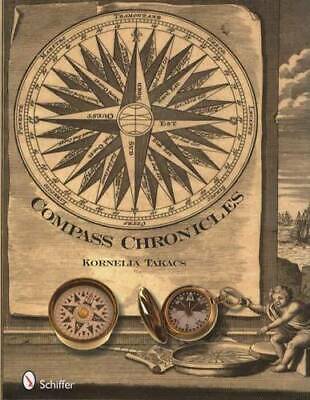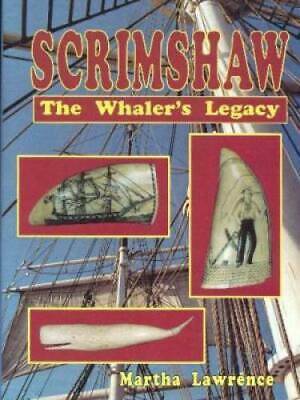-40%
Treasure of the Spanish Main, Parke-Bernet 1967, Treasure Auction Catalog
$ 84.48
- Description
- Size Guide
Description
This is the first major Treasure from the 1715 Spanish Fleet auction catalog. This auction was in 1967. It's the result of The Real Eight and several other Treasure hunters. The Spanish Fleet of 1715 had got caught in a terrible Hurricane in 1715 .10 out of 11 ship sank off the Florida coast with their Gold and Silver Treasure. This was rediscovered in the 1960s by Kip Wagner, and the rest is history.The 1715 Fleet and Kip Wagner Story
In late July of 1715, a hurricane surprised a twelve-ship Spanish convoy off the east coast of central of Florida and destroyed all ships but one. Laden with millions of gold and silver cobs, ingots, and many other treasures, this fleet had undertaken a much-delayed departure from Havana during what Floridians know to be the hurricane season.
The main part of the fleet had sailed for the New World in 1712 as the aforementioned War of Spanish Succession was approaching an end, negotiated by the Treaty of Utrecht in 1713. Even after 1713 the seas were not entirely safe for commerce, although less vulnerable than during the time of the San Jose disaster of 1708.
Spain desperatly needed the wealth stockpiled in the New World, far greater than usual because it had
accumulated for so long.
The principal elements of the fleet had gone to Veracruz to deliver mercury (an essential substance in the refining of silver cobs), sell merchandise, and pick up quantities of Mexican-minted bars and cobs. An unfortunate series of complications kept the fleet in Veracruz for two whole years before it could rendezvous in Havana with the vessels bearing the South American treasure brought from Panama and Cartagena. After still more delays in Havana, what was ultimately a twelve-ship fleet did not manage to depart for Spain until July 24, 1715.
The route was to be the routine one: up the coast of Florida on the Gulf Stream, which gradually turns outward into and across the Atlantic at about the location where the fleet was lost. When the winds and sea drove the ships shoreward, some sank in deep water, some broke up in shallower water, and others were grounded close to the beach.
Spanish slaves working the silver mines in Peru.
Hundreds of the crews and passengers lost their lives while other hundreds of survivors improvised a camp on shore to await aid from the Spanish fort in St. Augustine, to which a party was dispatched. They did not know that a srviving vessel had made it back to Havana, whence salvage ships were dispatched to the scene.
The Spaniards undertook salvage operations for several years, with the help of Indians, and perhaps they recovered more than half of the vast treasure, from the holds of ships whose remains rested in water sufficiently shallow for breath-holding divers. Gradually the salvors enlarged their encampment and built a storehouse on the spit of dune land just behind the beach that bordered a jungle. At some point a flotilla of British freeboaters under Henry Jennings appeared on the scene, raided the storehouse, and carried off some of the treasure to Jamaica. The Spaniards, however, resumed on the ocean floor until our time.
After a hurricane in the late 1950s a resident of the area named Kip Wagner found a piece of eight on the beach near Sebastian Inlet, some of whose dune line had been altered by the storm. He had wandered the beaches before and knew, like many local people, that storms sometimes were known to cast up similar coins onto the sand. The sunken treasure fleet out there was not unknown to Mr. Wagner. This time, however, he decided to pursue leads, like a 1774 chart of Florida with annotations of the sunken fleet opposite the Inlet.
Later, for .00, Wagner said, he bought one of the early metal detectors, a military surplus unit, prototype of the wands so common and sophisticated now at prices into the thousands of dollars. With this detector he sought and located the encampment area of the Spaniards and uncovered cannon balls, swords, and various artifacts. Examples of what he found can be viewed today in a museum owned and operated by the state of Florida on the very site of the Spaniards' encampment. Ultimately Mr. Wagner rented an airplane to look for dark spots in the ocean that might be the remnants of a ship, and he found them. Having noted the location, soon he and the pilot took out a boat and found the sunken ship's bed of ballast stones and a number of cannons, the timbers of the vessel having disintegrated ages ago. The next step was to buy a surplus navy launch and form a team of congenial divers and associates, at first bound only by a gentlemen's agreement and backed only by a salvage permit from the state of Florida. All of this took place over a period of years before it evolved into the Real Eight Company, the origin of whose name is obvious.
Kip Wagner with his .00 surplus metal detector on at the 1715 salvage site.
Wagner and his people originally built a dredge and suction apparatus; only later did they adopt the blower principle of their subcontractor Mel Fisher. The first finds were pieces of clay pots. With time came the jewels, the Chinese porcelain, the silverware, the gold and silver ingots, and as many as 10,000 gold cobs of the Mexico, Peru, and Colombia mints; and mostly in encrusted clusters, well over 100,000 silver cobs of all denominations. You can read all about it in January 1965 issue if the National Geographic magazine, or you can try to find a copy of Kip Wagner's own book, Pieces of Eight, a forthright narrative that is eminently readable, and also more accurate than all the other publications that have tended to romanticize the topic.
The salvage coins were all cobs, most of them minted between 1711 and 1715 in Mexico City, although all the other colonial mints and numerous earlier dates were represented too, some of the dates extending well back into the 1600s. Many of the dates and types of the 1700-1715 period had been either rare or unknown. Now they are less rare but still sell at ever higher prices because of the demand created by the years of publicity of the finds. Furthermore, what most distinguishes the cobs recovered from the 1715 fleet from those of other shipwrecks is their generally good weight. This would be expected of the gold cobs, since gold does not corrode, but for some reason the general run of silver cobs is superior to those of the 1733 fleet or to those from the Atocha and Margarita, all from different periods it is true, yet all from tropical waters around Florida.
John Brandon's group of treasure hunters find an eight reale this day.
As the salvage operation on the 1715 fleet reached diminishing returns, some of the associates like Mel Fisher headed for Key West and other areas to search for new wrecks. Do not believe, however, that the 1715-fleet search is over. Other galleons remain undiscovered, search areas are still leased from the state, and even old wreck sites continue to deliver quantities of gold cobs to an insatiable numismatic market. Some of the material throughout the state of Florida-divers, beachcombers, and old-time collectors who love their cobs and sell only when they must. The one collector that never sells is also the one with the largest collection of them all- the state of Florida. Spain lost it all to America, whence it came.











